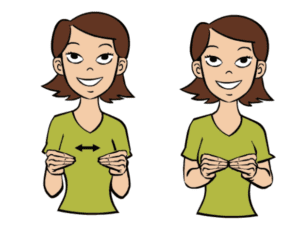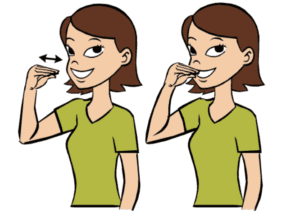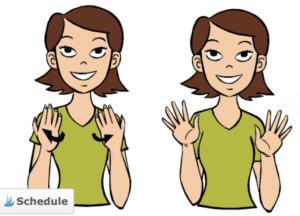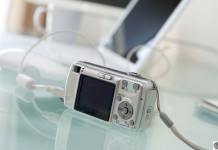Aren’t we all tempted (and usually end up buying) that baby gadget promising to magically deliver the impossible? The “I’m-so-exhausted I’ll shell out hundreds of moolah to make the problem go away” gadget. The special bottles, magic sleepsuits, vibrating swings… Yes, they worked, but soon you realize how few products actually have a useful lifespan past two or three months, and you’re left with a heap of expensive baby gear you can no longer use. What if there was something useful far beyond the first year? The second? Something that guaranteed better communication between you and your baby, improved his brain development and fine motor skills. Would you be interested? What if the only investment would be your time and I told you teaching your baby sign language could not only prevent future tantrums but improve his confidence and self-esteem, would you believe me?
To be completely honest, when I learned parents used sign language with their infant children, I quickly dismissed it as one of those things overachieving parents raising trilingual, classically trained child prodigies that will never ever, under any circumstances, be exposed to gluten, processed sugar or screen time. (To be clear, there is nothing wrong with any of the aforementioned things. Nothing. I wish I could do all of those things. I’m just trying to survive.)
And as my babies started growing, talk of baby “gadgets” soon transitioned to different parenting strategies. Baby Sign Language kept popping up. Spoiler Alert: And my former apathy gradually transformed into complete appreciation, because now, as a mama to two rambunctious twin toddlers who happily sign and talk daily, I can’t imagine our lives without it.
What is Baby Sign Language?
Baby Sign Language is the formal term for using simple hand gestures or “signs” to support spoken language helping parents communicate with baby before verbal language develops.
Baby Sign is a much simpler adaptation of American Sign Language, including hand gestures baby and parents make up themselves. But to some, Baby Sign Language has a stuffy, standoffish rap. It’s actually simple, helpful and fun, and in the long run, has lasting benefits.
3 Reasons to Try Baby Sign Language
- Bond and communicate better with your infant
- When baby feels understood, tantrums can potentially be reduced. Signing early introduces two-way communication building baby’s self-esteem and confidence
- You’ll be more aware of baby’s non-verbal cues and be able to better tune into baby’s needs reducing your own anxiety as well
- Research has shown babies taught baby sign have increased receptive language, speaking vocabulary, and mental development. One study revealed, even at 8 years of age, children taught baby sign as infants had a 25% higher IQ than their non-signing peers!
- Enhance baby’s fine motor skills
3 Simple Signs to Teach Your Baby
It’s not a coincidence that most experts recommend the first few signs to teach your baby are related to food/eating. Mealtime is a great introduction to sign language because it’s easy for them to link the word, the sign, and the action.
“More”
The first sign many babies learn because of its versatility. Sign “more” by tapping all of your fingertips together. Watch video

“Eat”
With one hand, close your fingers to your thumb like you’re placing food in your mouth. Watch video.

“All done”
A fun way for baby to tell you he’s finished eating. Rotate/twist palms back and forth. Watch video

When and How Should I Start Using Baby Sign Language?
- It’s never too early to start signing with your baby, but he won’t be able to start signing back to you until about 8 months old.
- Starting to sign when you’re introducing solids works well, about 6-8 months old. Food is a great motivator! It’s easy to teach “more” when they learn that this hand gesture gets them results (food)
- Be sure to say the word, and the sign simultaneously so baby understands the relationship
- Keep it simple, start slow with one or two signs at mealtime
- You don’t need to take a class, read a book or have formal training to sign with your baby. BabySignLanguage.com has great resources
I love signing with my kids. It helps us communicate better and it’s fun! The best part? It’s 100% free.










